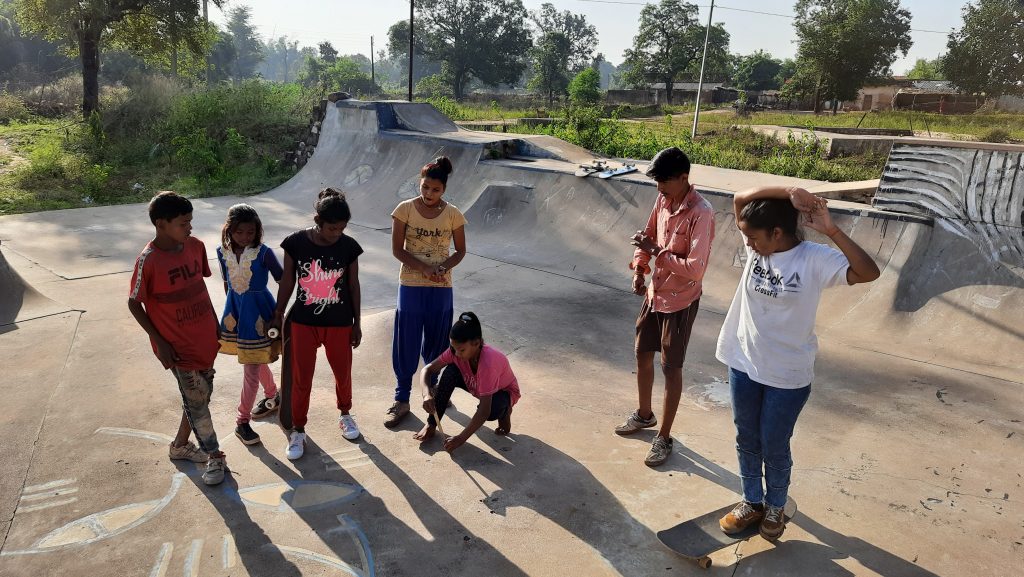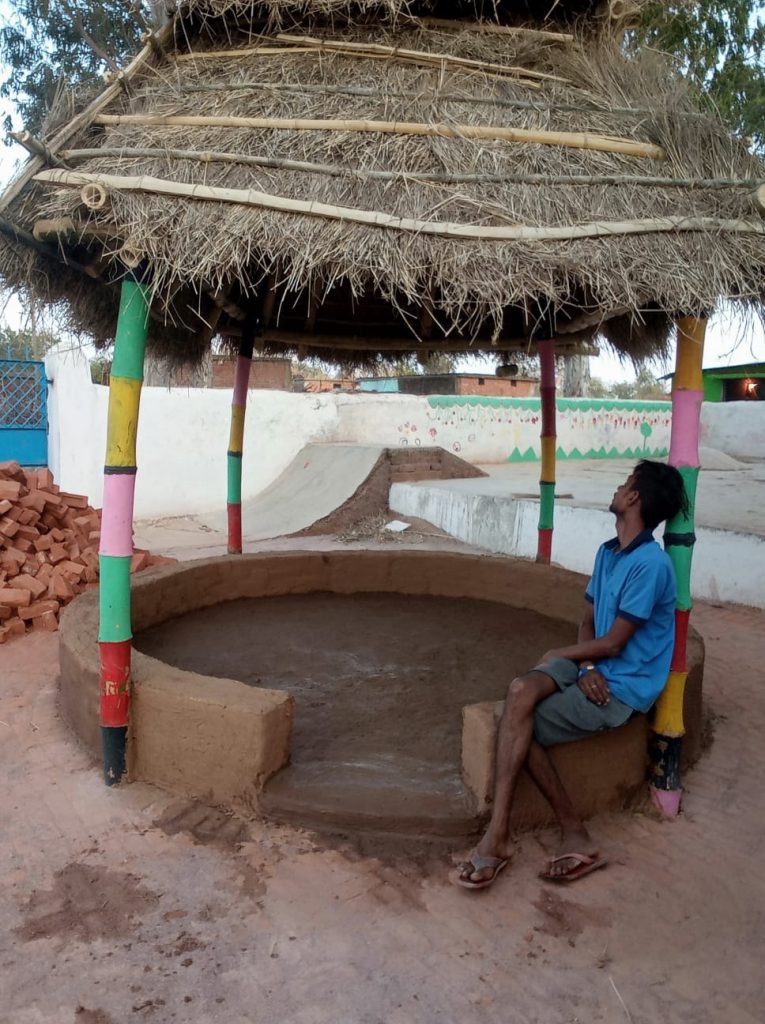The idea.
SkateStatS is a numeracy and data literacy project – literacy on topics related to mathematics, probability and statistics – that has recently started in Janwaar.
The project is endorsed by the Swiss Statistical Society (SSS) the Italian Statistical Society (SIS) and the Società degli Accademici Italiani in Svizzera (SAIS) . The SSS and SAIS also provided financial support for the project that, together with seed money received by Rotary Club Courmayeur-Valdigne, is paving the way to SkateStatS.
History and background.
When Ulrike Reinhard arrived in Janwaar – about 10 years ago – the village had no electricity nor sanitation. It is still a village where most people live on the poverty line. Ulrike had solar panels installed in the social center – Villa Janwaar (see image below) – which she started, but the real innovation she brought to Janwaar was the construction of a skatepark – now known internationally as Janwaar Castle (see image below) – which has contributed to a huge change in the mentality of the people. Thanks to the skatepark, where only two rules apply: ‘girls first’ and ‘no school no skateboarding’, gender and caste barriers have fallen in the village and school attendance has risen by 50%. This is a remarkable achievement, so much so that the idea of motivating change in a transparent and inclusive way through a skatepark has been adopted by other rural villages in India.
The pillars.
Skate. Educate. Build community: these are the pillars of Janwaar Castle where skateboarding is much more than four wheels and a board. It is a vehicle for social change, gender equality and education. The project has received several awards in India.
With SkateStatS we merge once again the pillars educate and build community by focussing on the elements: Experiment and Learn. And we do this by leveraging the eagerness to learn which the skatepark has already ignited in the minds and hearts of the young skateboarding champions.
A joint effort.
We now want to “use” the skatepark to explain basic concepts of mathematics, probability and statistics to the kids, and we do this with the help of Ulrike, Antonietta Mira – Professor of statistics at the Università della Svizzera italiana, USI, where she directs the Data Science laboratory, and at the University of Insubria – and Fabrizio Ruggeri – Director of Research at the Consiglio Nazionale delle Ricerche Istituto di matematica applicata e tecnologie informatiche (CNR-IMATI) in Milan.
In the field, the project can count on the help of Asha Gond and Anil Kumar – brilliant young people from Janwaar.
The idea of SkateStatS is to transfer parts of the exhibition Numb3d by Numb3rs! (Diamo i Numeri!), of which Antonietta is the creator and scientific director, and adapt it to the local needs and circumstances. The exhibition Numb3d by Numb3rs! is currently open in Lugano at the L’ideatorio (USI). The exhibition is a 3D journey where the 3Ds are Digits, Dice and Data.
First experiences on the ground – The wisdom of crowd experiment
The kids let a skateboard run from the top of one of the skatepark slopes. Before they let it go they guess how far it will go. The one whose guess is the closest to the real distance the skateboard ran is the winner. The “true distance” is measured and the kids calculates the average of the kid’s guesses.

The kids learn that the average of their guesses is very close to the true distance. By analyzing the guesses that they report, we see that a Bayesian learning process takes place: with time kids learn how to make better guesses (bias is reduced) and the variability of the guesses is also reduced. Finally, the children learn real-life contexts in which the principle of the wisdom of crowds can be applied, e.g. if they want to know how many hours of walking there are between Janwaar and a nearby village they can ask several “experts” (people who regularly walk that route) and then “average” the estimates they receive. They also learn that some experts might be more reliable than others and how to give more weight to these estimates when calculating the final average.
Construction for the first two experiments has started:
Two “exhibition pieces” will be shown outdoor in the courtyards of our Villa Janwaar. They will be the teasers for the indoor pieces. We’ve selected the “Five Number Systems” (India, Maya, Egypt, Babylon and Computers) which will go under one pavillon (see video below) and below the other one we will place the Galton Board.

Anil, one of our kids has made this video, you also hear his voice !
Before building the pavillions we also made the ground floor in the courtyards “pond-free” and laid out 18000 bricks into a sand bed.
One thought to “SkateStatS”
Pingback: Various Ways of Counting – The Rural Changemakers